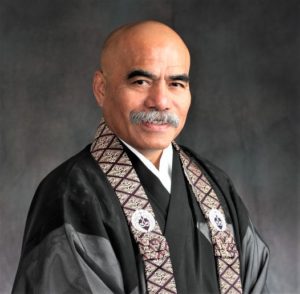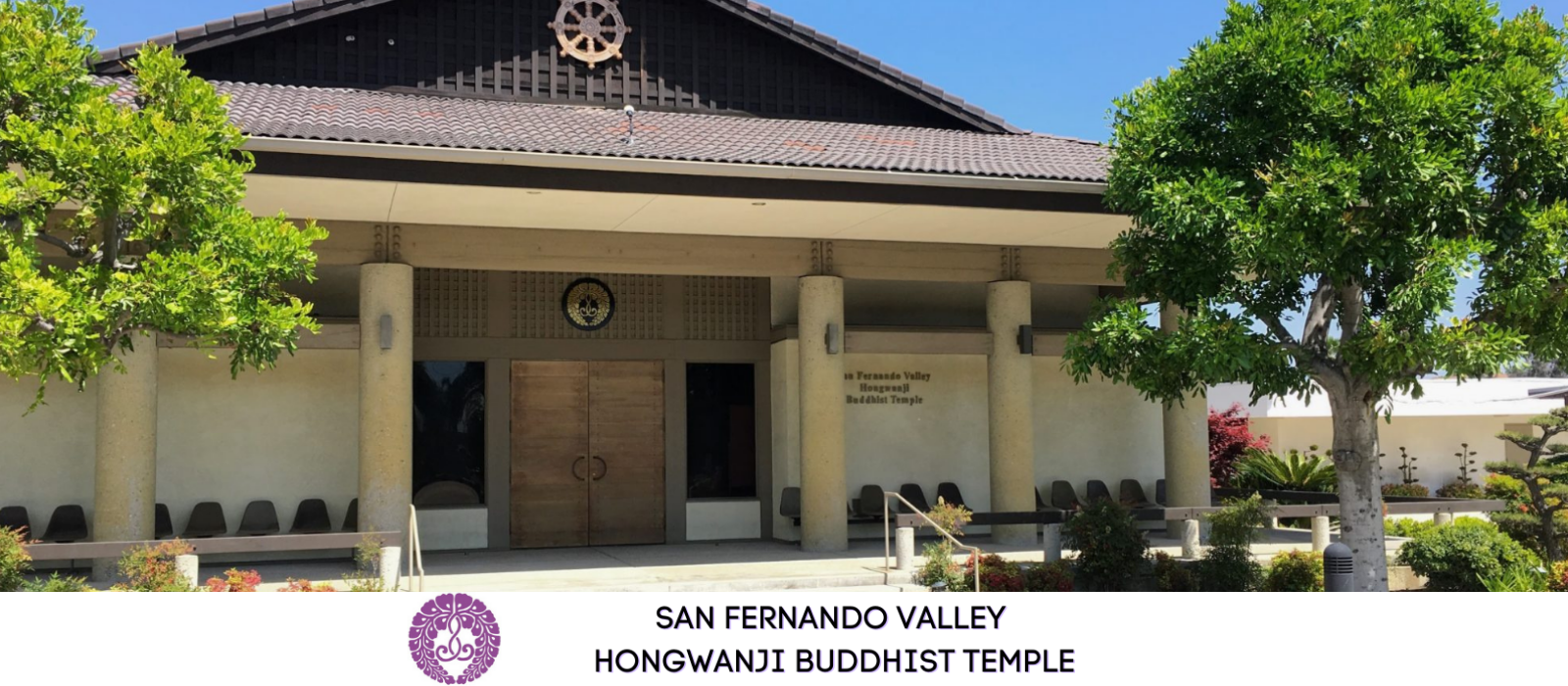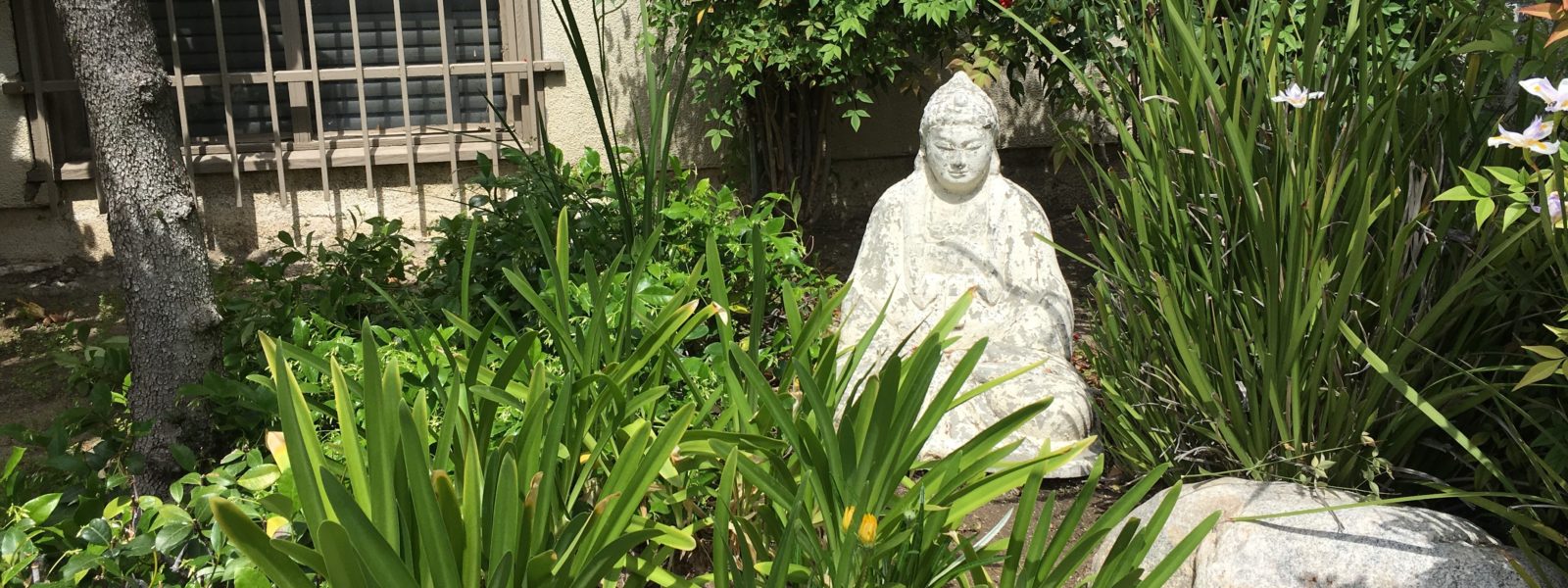Thoughts on Eshinni and Shinran’s Relationship

William Briones, Rimban, Los Angeles Hompa Hongwanji Buddhist Temple and Supervising Minister, SFVHBT
Although I never told your father about the dream in which I saw him as an incarnation of Kannon Bosatsu, since that time I never regarded him as just an ordinary man and continued to serve him. I hope that you too will fully appreciate what I am saying.
As you may already know, my wife, Nobuko Miyoshi, is a minister at West Covina Buddhist Temple. If someone had told me 28 years ago, when I had begun my studies at IBS, that I would someday be married to a Buddhist priest, I would have told them they were nuts! But here we are, having met over 25 years ago, sharing our life as Jodo Shinshu ministers.
As you can imagine most of our time is taken up with Temple work and activities. And even when we are at home, conversation is centered around work and the Teachings. There is no doubt in my mind that Nobuko has been instrumental in my development and my understanding of Jodo Shinshu, and she continues to influence me to reflect on the old adage, “practice what I preach.”
So I find myself trying to imagine what the dynamics were between Shinran Shonin and his wife, Eshinni, as they shared their life of Nembutsu but also living everyday in the mundane. It must be for certain that together they manifested the true intent of Nembutsu for the ordinary person.
In the month of October Jodo Shinshu temples throughout BCA will be paying tribute to Eshinni. As we commemorate the life of Eshinni, it gives us an opportunity to realize that despite Eshinni’s human frailties and suffering many hardships, she was able to live a life of gratitude and great joy, embraced by Amida Buddha’s compassion.
Until early in the 20th century, very little was known about the life of Shinran Shonin, and even less about his family. But in 1921, 10 letters written by Eshinni to their youngest daughter, Kakushinni, were found—letters that had been tucked away in the archives of Nishi Hongwanji in Kyoto and forgotten for centuries. These letters attest not only to Shinran’s profound devotion to the Buddha-Dharma, but they also shed light on Eshinni, also a devoted follower of the Nembutsu.
Eshinni led a very turbulent life. She was born in Echigo and married Shinran, who was exiled to that part of the country. Together they lived in Kanto for 20 years and then Kyoto for another 20 years. Later in life she returned by herself to her native Echigo, leaving behind her husband in Kyoto, and for more than 10 years she took care of her property that she had inherited, plus she took care of her grandchildren.
The opening reading comes from Eshinni’s third letter, a letter written to Kakushinni revealing a dream that she had about Shinran. Eshinni’s dream takes place at a dedication ceremony for a recently completed temple. She sees huge images of the Buddha. One of the images is emanating bright lights and she is unable to see the face. The other image is clearly the face of Buddha. When she asks what is the name of this Buddha, there is a reply: “The one with the light is Honen Shonin, who is none other than Seishi Bosatsu and the other is Kannon Bosatsu, who is none other than Shinran.”
She awakens from her dream and she vows not to tell anyone of the dream, fearing no one would believe her. However, she does tell Shinran about seeing Honen Shonin in her dream. Shinran acknowledges the significance of the dream, but she never tells Shinran that she saw him as an incarnation of Kannon Bosatsu.
Because of this dream, Eshinni regarded Shinran as an incarnation of a Bodhisattva of Compassion and assured Kakushinni of his exemplary religious life.
For Shinran, dreams and visions also played a significant role in his religious development. In one such dream, while Shinran was staying at Rokkakudo in Kyoto, he dreamt that Kannon Bosatsu appeared to him and told him that because he was driven by sexual desire, that he would indeed be with a woman. Kannon Bosatsu said that he would transform himself into the woman that Shinran would embrace. And that this woman would adorn him through out his life and at death lead him to the Pure Land.
It was this dream that ultimately drove him to abandon the monastic life at Mt. Hiei, convert to Honen’s teachings, and eventually marry Eshinni and have a family.
Little is written about the relationship, the interaction between Shinran and Eshinni. But one can only imagine the devotion and dedication they had for one another, since they both considered that their mate was the incarnation of a Bodhisattva. Together they help propagate the Nembutsu teachings, through drought, famine, disease … no doubt an inspiration to each other.
Truly, they were a unique couple, united in a deep and enduring faith. Together and apart they lived a life of deep gratitude manifesting the ideal of a Nembutsu practitioner.
As I reflect on Shinran and Eshinni’s life and their deep commitment to the Nembutsu, I can only dream that someday I too will awaken to the same great joy and gratitude that Shinran and Eshinni shared.

